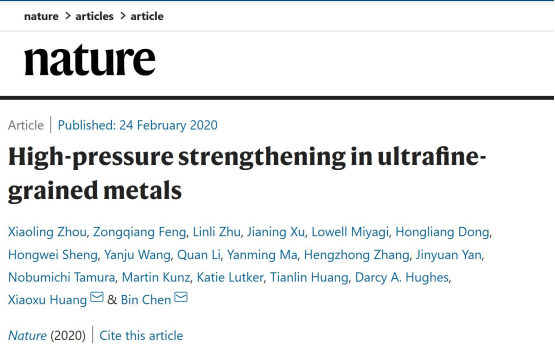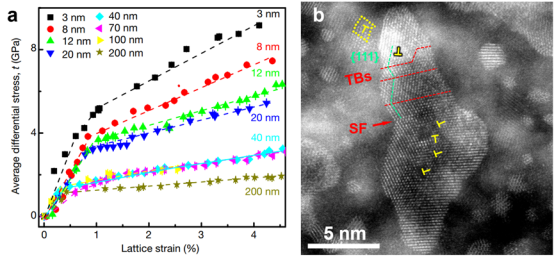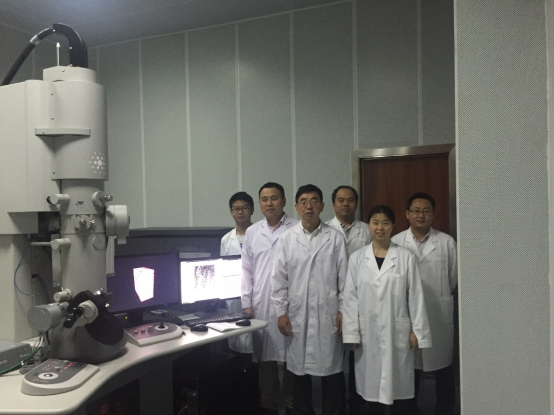Recently, Prof. Xiaoxu Huang's team of our college and Bin Chen's team from Beijing High Pressure Research Center published a research paper entitled "High-pressure strengthening in ultrafine-grained metals" in Nature. Professor Xiaoxu Huang is the co-corresponding author, Chongqing University is the co-corresponding affiliation, our young faculty Zongqiang Feng is a co-first author, and Associate Professor Tianlin Huang is a co-author. This research result is another important progress of Chongqing University in the field of materials science, following the publication in Science as a corresponding affiliation in July 2019.

(Online publication page)
The development of materials with higher strength is one of the important goals pursued by materials science. The strength of a material is closely related to its microstructural characteristics. Generally, the smaller the microstructure units (called "grains") of a material, the stronger it is, and this rule is the main driving force behind the research on nanomaterials. However, over the past two decades, many computer simulations and some experimental studies have shown that when the grains are smaller than a certain critical size (about 10 to 15 nm), the strength of the material decreases rather than increases when the grains are further refined. It is generally believed that this softening phenomenon is due to the sliding of the interface between grains in nanomaterials dominating their plastic deformation. However, due to the difficulty of preparing high-quality large-size nanocrystalline materials, it is difficult to accurately measure the mechanical properties of materials with grain sizes smaller than 15 nm, so the establishment of the strength-grain-size relationship for nanometals with finer grain sizes still requires the most direct and reliable experimental data.

((a) Continuous increase in strength of pure nickel samples with decreasing grain size under high-pressure deformation conditions; (b) high-resolution transmission electron microscopy images showing deformation microstructures, macroscopic morphologies and dislocation structure of pure nickel samples with a grain size of 3 nm.)
In this work, the researchers introduced a high-pressure experimental method in the field of geoscientific research to the study of nanomaterials for the first time, creatively solved the technical problem of strength characterization of nanomaterials, and reported the strengthening phenomenon of nano-sized pure metals with grain sizes below 10 nm for the first time. High-pressure deformation studies of nickel nano pure metals have revealed that the strength of the nano pure metals continues to increase as the grain size decreases, and more surprisingly, the smaller the grain size is, the more significant the strengthening effect is. In the sample studied with smallest grain size (3 nm), an ultra-high yield strength of 4.2 GPa was obtained, which is a tenfold increase in strength over conventional commercial pure nickel. Computational simulations and transmission electron microscopy analysis indicate that high-pressure deformation inhibits grain boundary sliding in nanomaterials and promotes the storage of crystal defects (dislocations) that play a role in strengthening, therefore leads to high-pressure fine grain strengthening. The above findings will further refresh the understanding of the critical grain size phenomenon in nanomaterial strengthening and re-invigorate the quest to obtain super-strong metals by modulating the grain size and microstructure of materials.
Xiaoxu Huang's team has been engaged in the research of electron microscope characterization (Science 2011) and strengthening mechanism (Science 2006, 2009, Nature 2010) of nano-metals, discovered some physical phenomena that are different from conventional metals, such as the heating softening phenomenon of nano-metals, and proposed processes to optimize the properties of nano-metals. In recent years, the team has been principal investigator for a series of national key research projects, such as the National Key Research and Development Program and the National Major Scientific Instrument Development Program, relying on the Electron Microscopy Center of Chongqing University, and the above-mentioned paper in Nature is one of the representative works of the recent research.
 (Some members of Prof. Xiaoxu Huang's team and the world's first 3D transmission-electron microscope with both 3D crystal orientation reconstruction and 3D diffraction image reconstruction functions developed by the team)
(Some members of Prof. Xiaoxu Huang's team and the world's first 3D transmission-electron microscope with both 3D crystal orientation reconstruction and 3D diffraction image reconstruction functions developed by the team)